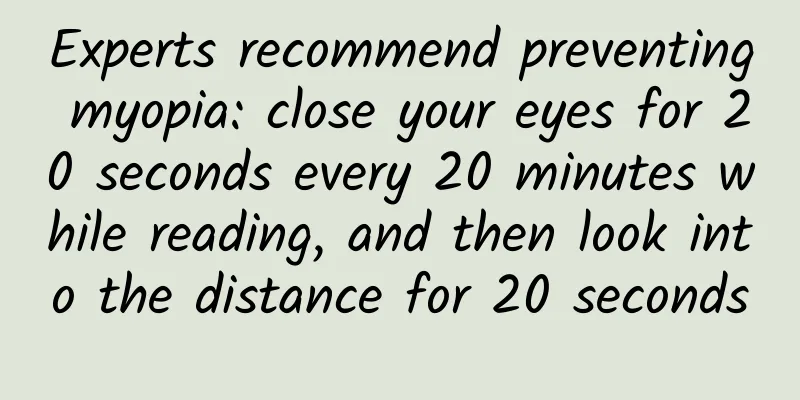How many degrees of myopia is considered high myopia?

|
With the development of science and technology, the frequency of eye use has been increasing, and myopia has become a common phenomenon. There are more and more people wearing glasses around us. It is said that high myopia will cause many harms, so how many degrees is considered high myopia? Min Hanyi, director of Tianjin University Aier Eye Hospital, said that clinically, myopia is generally divided into low, moderate, high and super high myopia according to the degree. Below 300 degrees is called low myopia, between 300 and 600 degrees is called moderate myopia, above 600 degrees is called high myopia , and above 1000 degrees is called super high myopia. The axial length of a normal person's eye is about 24mm. When myopia occurs, the axial length is greater than 24mm, and the axial length of a high myopia is greater than 26mm . High myopia is not just about high degree. Along with the elongation of the eye axis, it may cause a series of eye problems. What are the dangers of high myopia? 1. Retinal detachment Retinal detachment is a common complication of high myopia. When the eye develops into high myopia, the eye axis will be elongated and the retina will become thinner, leading to retinal detachment. If not treated in time, blindness may occur. 2. Retinal tear Retinal tears refer to cracks in the retina, which cause the retina to lose its nutritional supply and cannot maintain normal physiological functions. When the blood supply and oxygen supply are insufficient, retinal atrophy holes may form, leading to vision loss. 3. Macular degeneration Macular degeneration caused by high myopia refers to pathological changes in the macular area of the fundus accompanied by high myopia. Common macular degeneration includes macular hemorrhage, macular hole, macular atrophy, etc. Patients usually experience abnormalities such as blurred central vision, distorted vision, and central dark spots. 4. Vitreous opacity Vitreous opacities, also known as floaters, are related to vitreous liquefaction, turbidity and posterior detachment, and are more common in patients with high myopia. Large areas of vitreous opacities can seriously affect vision and even pull on the retina, leading to holes and bleeding. Warm reminder: Friends with high myopia must pay close attention to the condition of their eyes, avoid strenuous exercise and have regular eye examinations~ |
Recommend
Will I be deformed if I don't avoid certain foods during pregnancy?
Families with eugenics plans have a preparation f...
How long does it take for the belly to go down after a caesarean section?
For women who love beauty, the most terrifying th...
What should I eat after having an abortion?
Abortion is the best choice for many women who do...
Northern Illinois University: Study finds Facebook profiles can predict career performance
On February 21, 2012, the latest research from No...
[Medical Q&A] What is “cervical erosion”?
Planner: Chinese Medical Association Reviewer: Ji...
What to do if your face is allergic during the month
Facial allergies during the confinement period ar...
Causes of bloody urine
There are many common diseases in women's bod...
What to do if you have back pain during early pregnancy?
I believe everyone is familiar with the symptom o...
What is the cause of sticky and stringy menstruation?
Thick menstrual blood that is difficult to discha...
What are the ways to delay menstruation?
In fact, if your menstruation is delayed in your ...
I haven't had my period for seven months.
Not having menstruation for seven months is an ab...
How to reduce swelling and pain in gums during pregnancy?
People often say that when a woman gives birth to...
Kidney-tonifying dietary prescription for women
We often hear that a man's kidneys are overdr...
Why does my tongue turn black when I'm pregnant?
After a woman becomes pregnant, some abnormal phe...
How to use the printer? How to install the printer driver
The school season is about to begin. If you have ...









